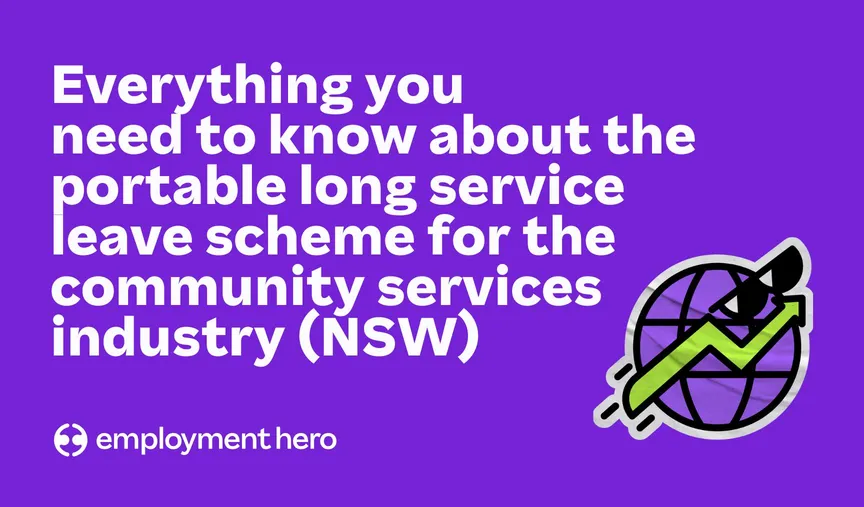7 Low-cost marketing strategies for small businesses
Make your business pop with these low-cost marketing strategies.

When it comes to marketing, small businesses often have a very tight budget and need to get creative to stretch their marketing dollars and make their business pop. The good news is that there are many low-cost marketing strategies that can be used to effectively reach and engage your target audience – all without breaking the bank.
We know both time and money is tight for SMEs. That’s why we’ve put together a list of tactics that are not only cost-effective, but also easy to implement.
Whether you’re just starting out or looking to revamp your marketing approach, these strategies will help you to make the most of your budget and grow your business.
So, don’t feel bad for taking the time out to read this post – grab a cup of coffee, get comfortable and let’s dive into the world of low-cost marketing for small businesses.
What is a low-cost marketing strategy?
Naturally, what might be low cost for one business might be considered prohibitively expensive for another. After all, cost is relative.
So when we say low-cost, we mean any marketing strategy that has a low impact on your business budget. It’s about getting as much bang as you can for your buck. A low-cost marketing strategy can help you grow your business without diverting too much money away from your core business operations.
Think this just applies to selling your products and services? Think again! It also applies to how you ‘sell yourself’ as an employer. You may well be surprised at how many recruitment marketing strategies there are and how closely they relate to more general marketing tactics.
Why should small business owners invest in marketing in 2023?
There are so many reasons why investing in marketing is a smart business decision. We see the main ones being:
✔️ Increase brand awareness
✔️ Stand out from your competitors
✔️ Attract new customers
✔️ Develop trust with your customers
✔️ Boost sales
✔️ Attract and retain top talent
The bottom line is that marketing helps to communicate the value of a business’s products or services to potential customers, and can be done through a variety of channels such as social media, email, and search engine optimisation.

With the shift to e-commerce, online shopping and remote work, having a strong online presence has become increasingly important for small businesses. It’s become a digital world. Investing in marketing can help small business owners stay competitive in a crowded, global marketplace and ultimately drive business growth.
Can low-cost marketing be effective for small businesses?
For small businesses, low-cost marketing can be an exceptionally powerful tool. Even with minimal investment of time and money, you can have the potential to get some big returns.
Of course there is no guarantee, but when you’re showing up on online platforms with a global reach, then you can start to see the potential.
Some examples include:
- Social media marketing: Platforms like Facebook, Twitter, and Instagram can be used to reach potential customers at a low cost. From organic posts to paid social ads, you can reach all the way around the world. Partnering with influencers in your industry can also help to reach a new audience at a lower cost than traditional advertising methods.
- Content marketing: Creating valuable and informative content can help attract potential customers and position a business as an authority in its industry.
- Email marketing: Email marketing is still king, and that’s because it’s a cost-effective way to reach customers directly. Email is a cheap way to promote offers, generate sales, share content, as well as nurture relationships over time.
Networking and community building: Building relationships with other small business owners, joining local networking groups, attending local, national or even international industry events can all help to expand your customer base.
But let’s not pretend that these strategies are all ‘free’. Even when there is no direct cost involved in monetary terms, they may still require a significant time investment. Additionally, you’ll most likely need to experiment with different strategies and tactics to find what works best for your business and target audience.
Where do companies spend their marketing budget?
Companies typically spend their marketing budget on a variety of different tactics and channels, depending on their goals, target audience, and industry. It is unique to each business, but here are some of the common focus areas where companies allocate their marketing budget:
- Advertising: This includes traditional forms of advertising such as television and radio commercials, print ads in newspapers and magazines, and online ads such as banner ads, pay-per-click ads, and sponsored content.
- Digital marketing: Digital marketing budgets typically cover social media marketing, email marketing, search engine optimisation (SEO), and content marketing.
- Events: Businesses of all sizes tend to allocate budget to attend trade shows, conferences, and other live events where they can connect with potential customers and showcase their products or services.
- Public relations: A budget for PR can be used to build and promote a company’s reputation through media coverage and press releases.
- Research and data analysis: Though underrated by many business owners, budget for market research, surveys, and other data-gathering efforts can be money well spent to better understand target audiences and improve marketing strategies.
Budget distribution will vary depending on the size of your business and the audience you’re trying to reach – for example, a small business may allocate a greater proportion of their budget towards digital marketing, while a large enterprise may allocate a larger proportion towards traditional advertising. The key is to keep an eye on your return on investment (ROI).
You want to get maximum return on your investment – and that’s why trying out different strategies, tactics, and platforms can help you figure out where you get the best ROI so you can double down on those efforts.

And if you want a bit more guidance? The ‘5% rule’ is a rule of thumb that says 2 to 5% of your sales revenue should be spent on marketing. New businesses tend to spend more while they try to get their business up and running – that can be anything from 12 to 20% of gross revenue. These are good guidelines to stick to, but with a low-cost marketing strategy, the goal is to keep it as low cost as you can to achieve the results you’re aiming for.
When would a low-cost strategy work best?
So you want to know when to deploy your low-cost marketing strategy? Here are a few examples of when a low-cost marketing strategy may be a good fit:
- When you’re just starting out: When you’re first launching your business, you may not have a lot of resources to devote to marketing. A low-cost marketing strategy can help you to get your name out there and build your customer base without breaking the bank.
- When you’re working with a limited budget: Even as an established business, you may find yourself in a situation where you need to be mindful of your marketing spend. A low-cost strategy can help you to achieve your marketing goals without overspending.
- When you’re testing new markets or products: If you’re considering expanding into a new market or launching a new product, a low-cost strategy can help you to test the waters, for example using a social media strategy or testing ideas or products in focus groups, without making a significant investment.
- When you’re looking to build brand awareness: Building brand awareness takes time, and it is a continuous process. A low-cost strategy can help you to get your name out there efficiently, helping you attract new customers at a lower cost than other custom acquisition strategies.
But let us carefully caveat this again. Even though they might not look like they involve a lot of upfront dollars, low-cost marketing strategies may require a significant time investment and may be slower or less effective than other more expensive strategies. Still, these are a great starting point for small business owners and can be a good fit depending on the scenario.
7 examples of low-budget marketing ideas
1. Leverage social media
Social media platforms such as Facebook, Instagram and TikTok are powerful tools that can be used to connect with potential customers and promote your business. By creating a strong online presence, you can build relationships, increase brand awareness, and drive traffic to your website.
2. Network and collaborate
Building relationships with other businesses in your community can be a great way to expand your reach and grow your business. Consider joining local business groups, attending networking events, or collaborating with other businesses on joint promotions or events to cross pollinate and grow your audiences. Not a fan of networking? We’ve got some tips to get you started.
3. Email marketing
Email marketing is a cost-effective way to reach a large audience and can be a great way to promote your business. Create a mailing list of current and potential customers and use it to send out regular newsletters or promotional emails.
4. Offer discounts and promotions
Offering discounts and promotions can be a really effective way to attract new customers and get customers to come back to you. Leverage this by offering a discount to new customers, or creating a loyalty program that rewards repeat customers.
5. Create valuable content
Creating valuable content such as blog posts, e-books, whitepapers or videos and tutorials can be a great way to attract new customers and establish your business as an authority in your field. Share your content on social media and your website to drive traffic and increase visibility. Don’t forget to make sure there is a balance between gated and non-gated content.
6. Attend trade shows and events
Attending trade shows and events can be a great way to connect with potential customers and promote your business. Consider exhibiting at local trade shows or hosting an event to showcase your products or services.
7. Referral Marketing
Referral marketing is both a revenue stream and a marketing technique that allows you to earn money by promoting and recommending other businesses – so if you use a product or service that you rave about, why not explore any opportunities for partnering for referrals? You can also provide incentives and rewards as a thank you to your customers when they recommend you to their network. Growing a business through word of mouth, reviews and recommendations can be a quick way to grow your business. Referral marketing can take many forms, but at its heart, it’s a way to get your biggest fans to help spread the word about your brand.
If you’re already using our platform, this is a great way to earn extra cash for your business. Our referral partners simply use a link to refer their Australian clients and customers to us, and we give you a thank you in return!
How to decide on your own low-cost marketing strategy
Deciding on your own low-cost marketing strategy can seem like a daunting task, but don’t worry! With a bit of planning and research, you’ll be able to come up with a strategy that works for your business. Here are some tips to help you get started:
- Understand your target audience. Before you start planning your marketing strategy, it’s important to have a clear understanding of who your target customers are and what their needs and interests are. This will help you to choose the right channels and tactics to reach them.
- Set clear goals. What do you want to achieve with your marketing efforts? Do you want to increase brand awareness, attract new customers, or boost sales? Having clear goals will help you to measure the success of your strategy and make adjustments as needed.
- Research your options. There are a variety of low-cost marketing tactics to choose from, so take the time to research which ones will be most effective for your business. Consider things like the cost, the time investment required, and the potential reach of each tactic.
- Get creative. Low-cost marketing doesn’t have to be boring! Think outside the box and come up with unique and engaging ways to reach your target audience.
- Test, measure and adjust. Once you’ve implemented your strategy, keep track of your results and adjust your approach as needed. This will help you to refine your tactics and make the most of your budget.
Remember, don’t be afraid to try new things and experiment with different tactics. Marketing is a continuous process, and you will learn more as you go. And don’t hesitate to ask for help if you need it.
Before you roll out any new strategy, even if it is low-cost, make sure your business is in tip-top condition. That is the best way to ensure that you get the most out of your investment, no matter what area of the business you’re focusing on.
Marketing efforts attract talent too
When it comes to marketing your business, you’re investing a lot of time, heart and money into getting your name out there and building your brand. The goal is to attract and retain loyal customers, but let’s not forget that this also affects your employees. Your marketing strategy also plays a big role in your employer branding too – that’s your brand as an employer.
When you have a strong brand that supports a thriving business, it also helps attract top talent to consider working for you. This is important, because nowadays a company’s reputation is considered more important than its actual product or service. Small businesses have a key advantage when it comes to employer branding – you have greater flexibility to experiment with different strategies and respond to the ones that really work. With top talent on board, you can go even further to achieve your business goals.
Luckily, like low-cost marketing strategies, you don’t need an enormous budget to build a strong brand image.
At the end of the day, we’re here for your success. We love low-cost marketing strategies as much as the next business, but we know that investing in your people is one of the best things you can do to grow your company. For the low down on how to lift up your recruitment game, check out our handy guide.
[inline-form form-id=6738]
Related Resources
-
 Read more: NSW Government introduces Portable Long Service Scheme for the Community Services Industry
Read more: NSW Government introduces Portable Long Service Scheme for the Community Services IndustryNSW Government introduces Portable Long Service Scheme for the Community Services Industry
The NSW Government has introduced portable long service leave for the community services industry. Learn what it is and what…
-
 Read more: Payday Super changes: What we’re fighting to fix and why it matters to you
Read more: Payday Super changes: What we’re fighting to fix and why it matters to youPayday Super changes: What we’re fighting to fix and why it matters to you
Big changes are coming to how superannuation is paid in Australia. Here’s what we’re asking Treasury to seriously consider updating…
-
 Read more: Why choice in superannuation matters
Read more: Why choice in superannuation mattersWhy choice in superannuation matters
What could be coming when Payday Super hits and what Employment Hero is doing about it.













